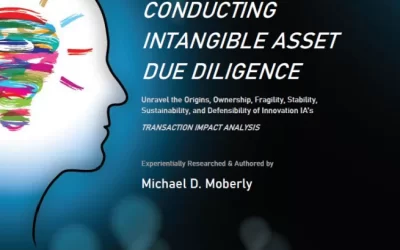This professional development curriculum describes intangible assets as…
- Distinctive – unique blends of business activities, processes, know how, and customer/client relationships that companies can exploit to differentiate themselves from competitors, and thus create – contribute to value. Michael Porter, Harvard Business School
- Internally developed know-how that supports proprietary methods, processes, best practices, and the ways in which relevant information is used and applied. Weston Anson, CONSOR
- At the beginning of a process (as ideas), at the middle of a process (as patents), and at the end of a process (as commercialization and distribution channels). Dr. Baruch Lev, NYU, Stearns School of Economics
- Often mis-characterized (e.g., trademarks, brands, etc.) as primarily encompassing business goodwill.
- In part that is correct, however,
- American Institute of CPA’s defines ‘goodwill’ as all-of-the intangible assets and supporting assets that contribute to ‘advantages’ that an established business has over its competitors or comparable businesses, about to be started, i.e., image, customer base, reputation, perceptions.
- UK broadly defines ‘goodwill’ as the probability that a company’s customers would continue to do business with it and value its products and services above those available from competitors.
- In part that is correct, however,
The projected – actual valuation, competitiveness, attractivity, revenue generation capability and business operating culture across sectors, overwhelmingly derive from introducing the right intangible assets, in the right way, at the right time, at the right cost, while safeguarding – mitigating risk can extend their value-materiality (life cycle).
Recognizing and attaching relevance to business things intangible by their developers, holders, and owners, is essential to…
- translate same as attractive, distinguishable, and sustainable desires, preferences, wants, and needs of prospective buyers, consumers, and
A driving principle to this professional development curriculum is for participants to develop ‘operational familiarity confidence’ regarding business things intangible, ala know’em when you see’em, which includes various…
- forms, contexts, applications, circumstances, and transactions intangible assets will be in play and probably at risk.
There are various (conventional) perspectives (standards, criterions, edicts, etc.) about business intangible assets, many still held and practiced which variously…
- dissuade differentiating – attaching relevance to their contributory roles to business operating culture attractivity, competitiveness, resilience, and sustainability, ala brands, products, services, and standing.
Each is clearly intangible asset intensive, dependent, and reliant, as this curriculum accurately and objectively conveys throughout.
Experientially, this dissuasion (sic) detrimentally influences business specific intangible assets (underlying specific products, services, and brands to be overlooked, disregarded, and un-or-under-valued, due in part to presumptive (standardized) durations of an assets’ materiality (life-value) cycle.
Respectfully, this professional development curriculum endeavors to amend these and other miscues by describing…
- rationales to recognize, differentiate, and steward business’s mission essential intangible assets, irrespective of (business) sector, size, stage, or location.
- which, when, where, how, and why particular intangible assets are in play in the development – execution – outcome of most business initiatives, projects, and transactions.
This curriculum draws participants attention to, intangible asset specific contributions to business (product-service-standing, launch) attractivity, valuation, reach, competitiveness, and revenue generation potential, i.e.,
- the right ones being introduced – applied at the right time, in the right way, at the right place, at the right time, at the right cost.
- applying effective safeguards and risk mitigation.
- translating all to resilience assets.
- The ‘Business Intangible Asset Blog’ is experientially researched, written, and published by Michael D. Moberly since 2006, with1100+ (long form) posts providing readers, ala business leaders, management teams, entrepreneurs, boards, and investors, et al, across sectors, with current – relevant perspectives and nuanced insights on matters related to business things intangible.
- For further context you are encouraged to examine kpstrat.com, videos, and posts @ Business Intangible Asset Blog



